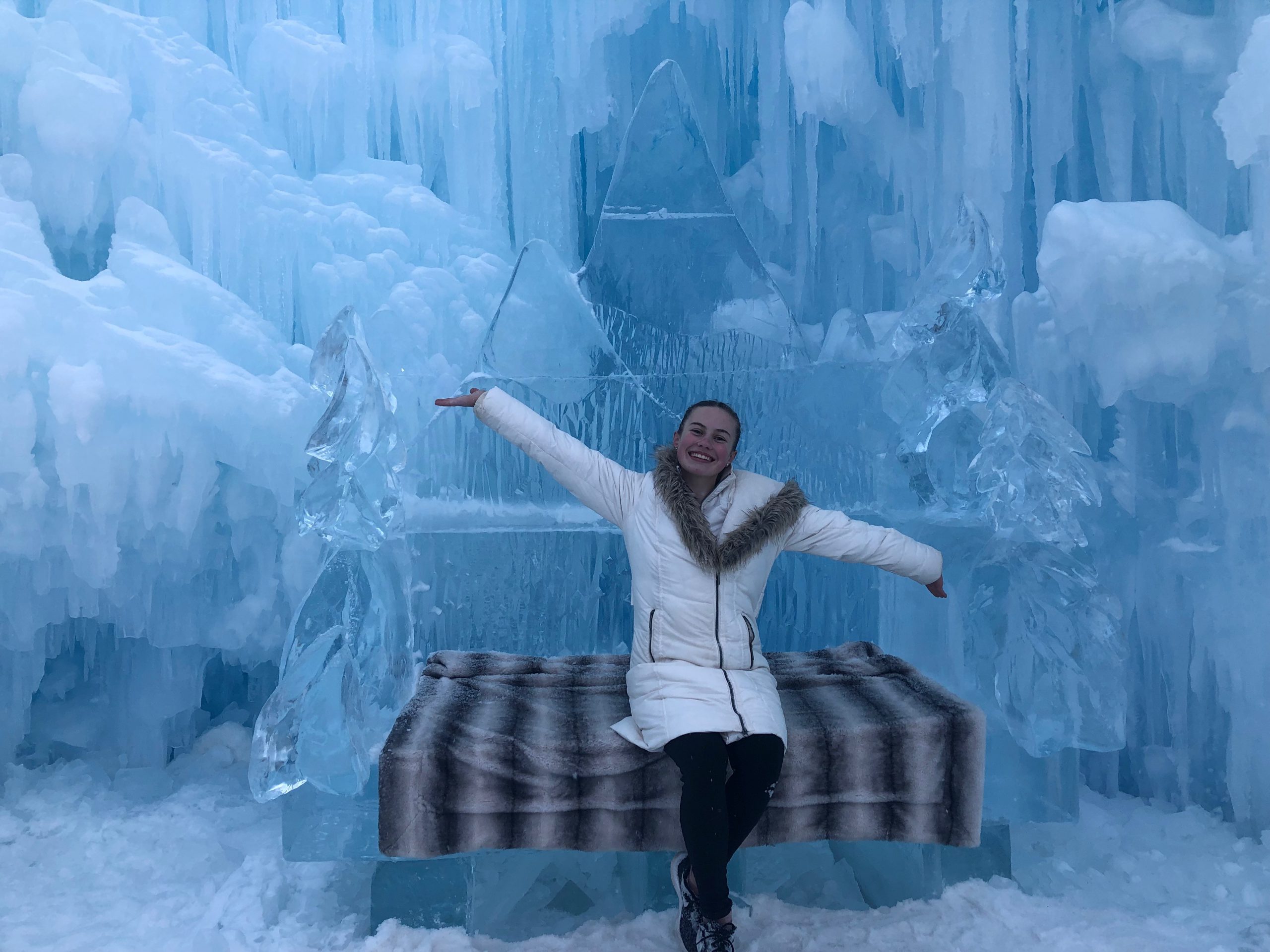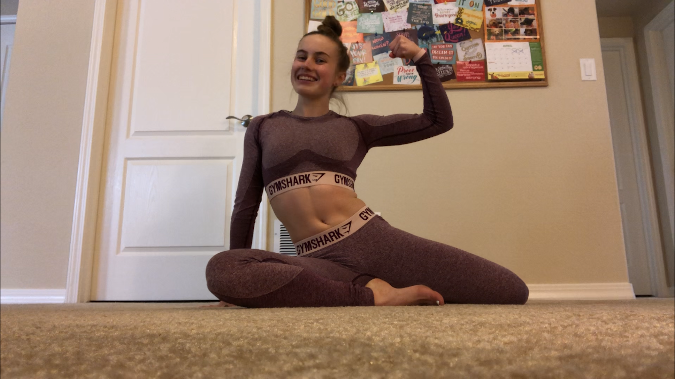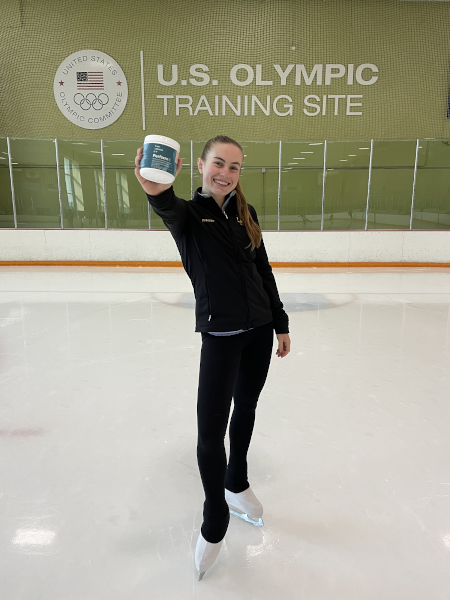How to Master Proper Ice Rink Etiquette!
Whether you are a brand new figure skater or you have been skating for years, ice rink etiquette is something everyone should learn.
Who has the Right of Way?
Starting with the biggest and probably most important aspect of ice rink etiquette… who has the right of way?
1st Priority – Program Music
On any figure skating session, the skater who has top priority in terms of the right of way is the one whose program/test music is playing. At many rinks, this skater will wear a colorful belt to indicate to others that their music is playing and they have the right of way.
On particularly busy sessions (if allowed), a skater might also play their program music and practice other things such as a moves in the field test.
2nd Priority
Skaters who are in lessons have the next highest priority of right of way. These skaters are not only currently paying for their ice time but also for private lessons.
3rd Priority
Skaters in the overhead harness also have the right of way. Many harnesses are on a cable overhead. This limits the skater’s area they are able to skate in, however, they still need to be aware of their surroundings and watch out for those playing their music.
Music Systems
The system used to play program music varies from rink to rink. Some rinks have high-tech systems with Bluetooth or even a shared iPad that everyone downloads their program music on. Others may have the more traditional route of a CD player or a simple aux cord.
Once you know how the music system at your rink works, you need to learn how the system for having your music played works. This will be some kind of line or list system put in place to ensure each skater has a fair chance to play their music. Most rinks will have a list or line created where you can write your name or add your CD/phone to the line. This line will then cycle through to each skater, however, there are some exceptions.
Coaches usually will have higher privileges and the potential to cut in front of the line. Some rinks will even have special “cut the line” rules for specific skaters during a big competition week.
Again, these systems and rules can vary from rink to rink so if you are unsure of how your rink system works, the best would be to ask a coach or ice monitor so you can plan your session accordingly.
Respect the Ice
You are not the only one using the ice, and it takes a lot to maintain so be respectful of the ice.
Don’t purposefully create holes by digging in your blades, kicking, or scraping the ice.
If you create a large hole from a jump, consider filling it in with a little snow. It doesn’t have to be a masterpiece but a little snow fill-in goes a long way.
Read U.S. Figure Skating’s guide for on-ice etiquette to learn more about this!
Avoiding collisions
When skating on a busy session there is always a chance you may collide with another skater. Here are a few simple tips to prevent that from happening.
Awareness and Courtesy
The biggest aspect of navigating a figure skating session is being aware of your surroundings and being courteous to others. You can’t expect every skater to move out of YOUR way so once you can start to predict where another skater is going, the chance of collision is a lot lower. In my recent blog post, I talk about the common jump patterns and spinning spots to help you better navigate a freestyle session.
Standing Around
If you are standing at the wall, always look both ways before skating out into traffic. It’s just like crossing the street. You want to ensure no one is zooming by as you are about to skate out from the boards. This also applies when skating back to the boards or to your coach from elsewhere on the ice.
If you are away from the boards, keep moving! Even if you are just simply skating laps around the edge as a breather. Standing around in the middle of the ice can become a safety hazard for you and the skaters around you. If you need to take a break, the safest place to do so is at the boards.
Although standing at the boards is the safest place to take a break, you still need to be aware of your surroundings. Some patterns and programs can get awfully close it the boards.
Spinning
Before stepping into a spin, ensure you have adequate room to complete the spin. You can also benefit from planning ahead and trying to predict if a skater may skate through the spot you want to spin in. Once you are in the spin there is not much you can do to move out of another skater’s way. Just pay attention to your surroundings when exiting the spin and skate over to the boards if you are dizzy or are not going to spin again.
Falling
Falling is an inevitable part of skating. To best keep the flow of traffic and avoid collision, do not sit or linger on the ice too long after a fall unless something is seriously wrong.
Headphones
This topic can be a little controversial regarding the ice, so let’s talk about it!
Headphones can be a great tool to utilize on the ice or just used simply for pleasure (maybe you can’t stand the music playing over the aux, we don’t judge!)
One way coaches and skaters like to utilize headphones is by sharing 1 headphone each for coach and student. With one headphone for each person, it is easier to practice program music and/or choreography over and over again without having to use the loudspeaker. Other coaches when in a lesson may just follow their skater around with a small handheld speaker that is at a good volume for both the skater and coach to hear. This can be a great alternative if your rink does not allow headphone usage.
The controversy arises when it comes to safety. If they even allow it, many rinks/coaches suggest only wearing one headphone in at a time so you can be more aware of your surroundings. For example, if a skater is about to collide with you, they may yell something like “WATCH” to make you aware of them skating by. With both headphones in it can be harder to hear the things happening around you including those important cues that can affect everyone’s safety.
Again, not all rinks have specific rules about headphones, so if you are unsure it never hurts to check with a fellow coach or peer to clarify.
Virtual Testing
In this day and age, it is a lot more common for figure skaters to be filming a virtual test on freestyle sessions. There are certain requirements for these kinds of tests, so filming on a busy session can be quite a challenge.
Here are some ways you can be considerate of a skater who is filming a virtual test.
- Be aware of where the camera is (the videographer may be standing behind the boards).
- Avoid skating in front of the skater if/when possible (especially when in the way of the camera’s view).
- When skating laps, do your best to avoid the camera’s view as you skate by.
Not all of these suggestions are achievable all the time, but if possible I can guarantee the skater will greatly appreciate you helping them record a nice clean video.
Click here to view the US Figure Skating Guidelines for Virtual Tests or the Technical Notice on Judging Virtual Tests.
Conclusion
Learning ice rink etiquette … As always if there is ever something you are unsure about, don’t hesitate to ask a coach, ice monitor, or peer for guidance!
Resources
U.S. Figure Skating Basic Ice Usage Etiquette and Safety Document
Learning Ice Rink Navigation Blog Post
Ice Rink Navigation Sheet (Lefty Version)
If there is anything you think I missed let me know! I am always doing my best to keep up-to-date and accurate information.
XOXO, Rebecca
You May Also Like

Visiting the Ice Castles In Colorado
March 10, 2019
Quarantine Ideas For Skaters Stuck at Home
March 29, 2020

